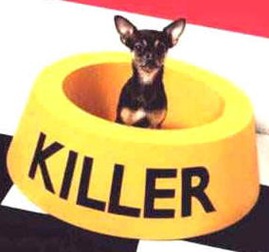by Danny Wong
We marketers sometimes don't always get it right.
We buy ad space on sites that look pretty. We giggle with glee when someone tweets about our product. We let out a victory cry when we are mentioned in the news. But often, marketers forget to ask the question: What will this do for our business?
Unfortunately, this is a frighteningly common problem. We forget that everything we do should somehow impact our business’ bottom line, and, instead, point to the number of page views our site received -- despite having miserable conversion rates and web sales.
As a result, some marketers hit a plateau. They are married to a certain way of doing things and slip into a few bad habits:
1. The premium-press trap. “Look at how much success we’ve had. The Wall Street Journaland Oprah love our product. This week alone, 16 premium-press outlets mentioned us.”
But how many sales resulted from those enviable PR hits? For some, exposure in The New York Times can dramatically change their business. In the early stages of one of my startups, that was actually the case. Yet, Michael Ellsberg shares his example of how coveted features in theTimes and CNN led to underwhelming book sales. Instead, he attributes much of his book’s success to a guest post he “published on the blog of one lone dude in SF obsessed with fat loss, female orgasms and lifting Russian kettle bells.”
2. The no-metric loop. “This campaign works. I can’t give you exact numbers, it just does.”
If you’re not obsessed with analyzing the effectiveness of each of your marketing activities, you’re doing it wrong. Without measurable results, you are unable to know whether or not your efforts are getting better or worse.
3. The bandwagon mistake. “This is something everyone is doing; therefore, this is somethingwe should be doing.”
This is a completely invalid argument. Years ago, when social media was popularized, marketers by the swarms joined Twitter and Facebook. They created branded accounts only because so-called industry experts proclaimed social was the key to success and because all of their peers blindly followed the trend. Today, some of those marketers still have no clue what they’re doing in social media and still waste their time managing company profiles.
If you want to be a better marketer, don’t let bad habits dictate the pace of your professional growth. Resolve to stop making the same mistakes and to discover and cultivate new skills whilst honing existing ones.
Here is a simple guide to help you become a better marketer:
Identify critical business goals and metrics. Essentially, know your key performance indicators, or KPIs. Begin with a quantified understanding of how many new sales or users it will take for you to be successful and always keeping that end goal in mind.
List the things you do on a weekly basis. Understanding what you do is critical to self-improvement.
Estimate the time it takes to complete each task. Knowing how long things take provides valuable insight for the upcoming steps.
Measure the relative impact of each task and weigh it against time spent. Consider these two scenarios: your weekly email newsletter brings in $1,500 in new sales and takes two hours to craft, deliver and manage and in a week, your pay-per-click campaign drives $3,000 worth of sales, costs $2,000 in ad spend, and requires five hours of weekly optimization and maintenance. Now, a question: Which marketing activity delivers greater profit-per-hour? Keep these metrics in mind when making future decisions. Commit to doing more things that are high-yield and low-investment.
Trim the fat. With the analysis from step four, you’re ready to make smarter decisions about your overall strategy. Stop doing things that are outrageously time-consuming and fail to drive results. (Hint: Remember your KPIs)
Spend 80 percent of your time on proven strategies and 20 percent experimenting with new tactics. Devote the bulk of your time towards efforts that are proven to work (so you’re productive), then budget a small chunk of time each week for “experimental projects” (so you’re always learning).
Go bold. Test your courage and grit with daring campaigns. Invest in your first native ad, pilot a web series or perform a public stunt. Effectively, you drive business metrics forward when you spend most of your time on “guaranteed hits” and use the remainder of your time to try new strategies that may be pivotal for your business’s growth.
Rinse and repeat. You do yourself a disservice when you do not quantify the impact of your work. You also fail as a marketer when you do not change up your rigid routine by introducing new methods and techniques to your marketing playbook. Do not repeat the same mistakes over and over again. Instead, make new ones.
Through constant experimentation and testing, you’ll fail often, but, in due time, you’ll identify a handful of wildly successful and scalable tactics that may grow your business quickly in a matter of months.

















